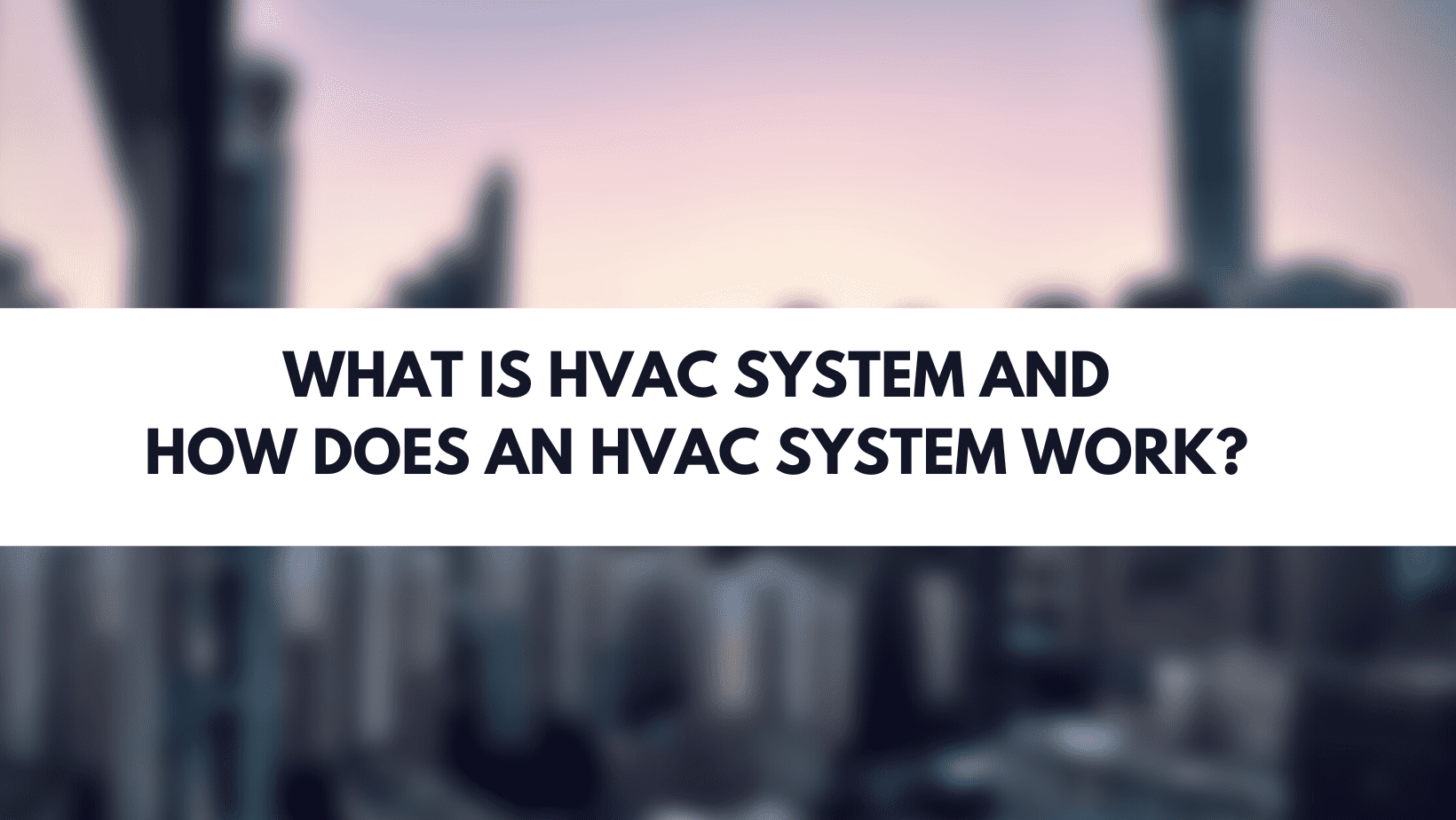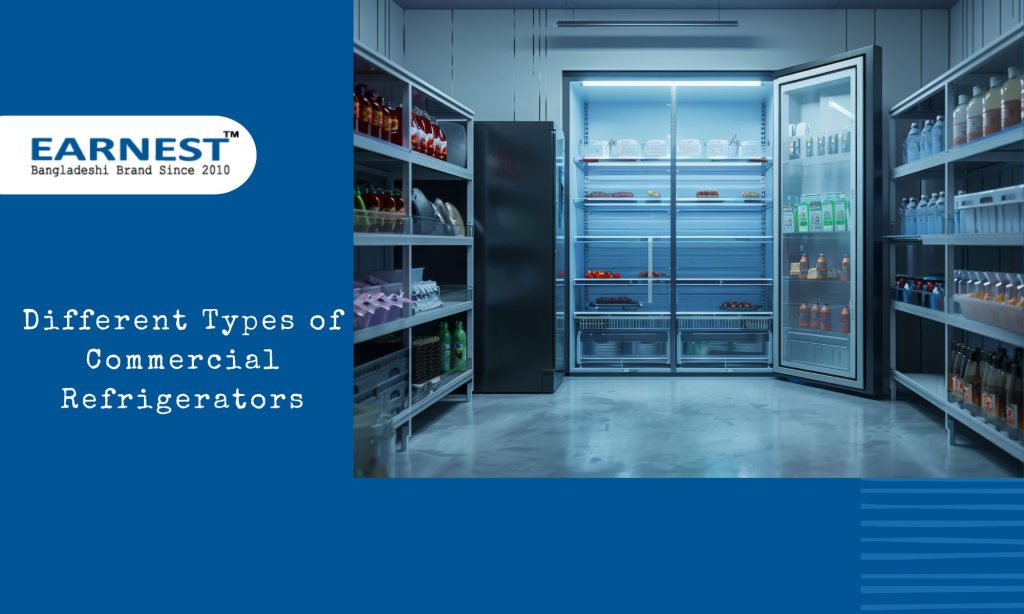The popular search engine Google features ample searches on “What is HVAC”, “How does an HVAC work”, “What it includes”, etc.
You may also have heard or searched about it.
And how can you not when it is something that ensures comfort with the right temperature and fresh air inside your space, regardless of the outdoor weather? Every building, be it residential or commercial, has an HVAC system installed. But very few people actually know what it means and how it functions.
However, it is essential to know the answers to the above questions.
Because with endless choices available, the only way to make the right decision is to be informed. This post will walk you through the meaning of the HVAC heating and air conditioning system, its components, and how it functions.
What is HVAC System?
Heating, Ventilation, and Air Conditioning or HVAC system is a mechanical unit designed to regulate and move air around a space. The said space could be a residential building, a commercial property, an industrial plant, or an institutional structure.
Regardless of the place, the primary function of an HVAC is to ensure the thermal comfort of occupants by adjusting the outdoor air conditions per the desired conditions of the indoor place. Simply put, it takes in outdoor air and distributes it into indoor space after heating or cooling the air.
However, it’s more than just a unit that cools or warms your space.
It is also responsible for maintaining the temperature and controlling humidity levels. The V in HVAC stands for ventilation, which means replacing air within a space. Thus, the system improves air quality while keeping bacteria, dust, smoke, carbon dioxide, and other gases at bay.
The selection of an HVAC unit for a particular structure depends upon the following considerations:
- Climate condition
- Structure location and age
- The architecture of the building
- Budget
- Owner’s requirement
- Existing ductwork
How Does an HVAC System Work?
Though the HVAC heating and air conditioning system comes in different types, their basic functions remain the same to ensure environmental comfort to building occupants.
The HVAC system kicks off its functioning with ventilation by bringing the fresh air indoors. Natural ventilation takes place through windows, doors, and vents of its own accord without the need for any machine. However, due to today’s enclosed and tightly sealed architecture, adequate ventilation is not possible without help from ducts, blowers, filters, and fans.
Now, to really grasp how your HVAC functions, you first need to comprehend the different parts of this system.
-
Air conditioner
This system is responsible for cooling a space. The air conditioner features a fan that brings air in and runs it over the evaporator’s coils. Charged with refrigerants, these coils extract heat from the sucked air and cool it.
After this, the air goes through the air handles, where a blower further passes it into ducts. As your cool air moves into the ducts, any harmful gases produced during this process are removed through the flue. So, the air that enters your occupied space is cool and fresh.
-
Furnace
Generally, a furnace is powered by natural gas or oil, though some electric models also require electricity to function.
That said, you have a heat exchanger featured inside the furnace that is responsible for heating air to set the desired temperature. It is responsible for warming your place by generating the right amount of heat.
It is usually located in your house’s attic, basement, or closets at times.
-
Ductwork
Simply put, ducts are pipes or tubes spread throughout a structure. Your ducts are an essential part of your HVAC. They are the channels through which cool or heated air passes based on the thermostat setting selected.
Ductwork pushes out air into vents in your space. The vents in your home’s floor or ceiling are openings of the ducts and are responsible for delivering air into every room.
Besides, the system that uses ductwork requires a balance HVAC system to move air equally through all residential and commercial spaces. The HVAC air balancing procedure involves altering your existing HVAC system for the even distribution of air throughout your home.
-
Return air duct
Air return is that part of your HVAC that begins the ventilation cycle. This return pulls in air, runs it through a filter, and passes it on to the central system.
-
Air filter
This part of the system stores the outdoor air drawn in and purifies it before passing air into the central system. It has a significant impact on the quality of your indoor air, so check and upgrade it regularly to enjoy fresh air free of harmful airborne particles.
-
Electrical elements
Electrical elements of your HVAC are extensive and complicated, often the source of various problems within your system. So, if something isn’t working right, it is advised you first check the breaker box to see if something tripped.
-
Outdoor unit
When someone says HVAC, it is the outdoor unit that pops into most people’s minds. It features a fan that provides your space airflow. For optimum efficiency, this unit should be frequently cleaned and free of debris and dirt.
You can commonly find the unit in split systems where, apart from outdoor, you have indoor units too.
-
Compressor
Inside the outdoor unit, you have the compressor, whose role is to convert the refrigerant from a gas to liquid and move it to the coils. Usually, if your HVAC is not working right, you should also check the compressor, as it is often the cause of system failures.
-
Condenser
The condenser is situated inside the outdoor unit. The main task of condenser coils is to extract heat.
-
Evaporator Coil
Another critical part of the outdoor unit, evaporator coils are responsible for cooling the air as it passes through.
-
Blower
This part of the HVAC heating and air conditioning system pulls in warm air with help from a section of the unit.
-
Thermostat
The thermostat is the brain of your HVAC system placed inside your home. Its job is to control the temperature and mode. When you set the warming mode, it will heat your space and switch off automatically once done. Likewise, when placed in cooling mode, it will chill up your home and shut off afterward.
Amazingly, with rising technological innovations, you have thermostats that allow you to set minimum and maximum temperatures so that your unit will switch easily into cooling or warming mode as needed. Some thermostats can also be controlled with your smartphones and have filter update reminders.
The Bottom Line
Overall, HVAC units are complex systems with intricate features that are mainly responsible for keeping your place at the right temperature all year round. The system starts with your thermostat setting. If your home’s temperature is cooler or warmer than the set one, the HVAC will kick on and operate until it achieves the set temperature.
Now that you know what it is and how it functions, you must be wondering how long the HVAC system will last. Well, if you buy one from the most qualified HVAC company and ensure its annual maintenance combined with HVAC air balancing procedure, it will last for years to come!






